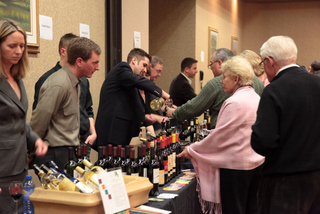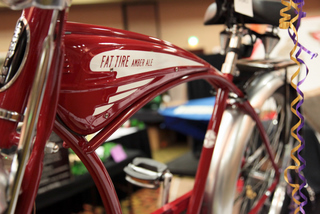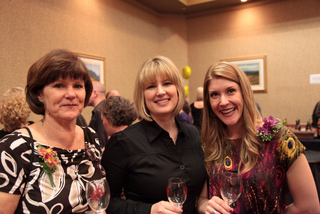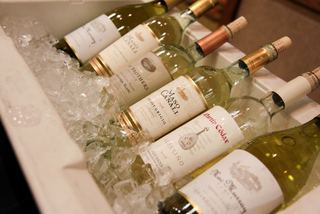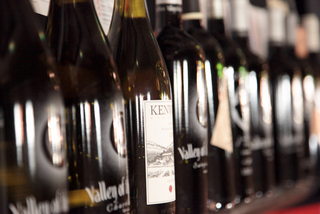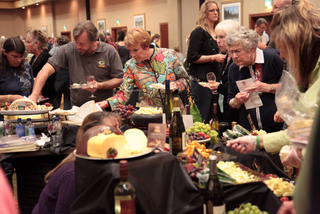Wine Tasting TipsThe art of wine tasting
Wine tasting is supposed to be fun - if you are not an experienced wine taster, don't be overwhelmed. Try these wine tasting tips to help you navigate your way through Wine Fest. You'll soon become comfortable tasting wines if you practice these tips. For best results, check the appearance of the wine, swirl and sniff, sip, savor and swallow. It's that easy! Where to start? With the right approach you won't be overwhelmed at a large tasting. As a general rule, taste wines in the following order to minimize palate fatigue: - dry white wines - sweet white wines - dessert wines - light red wines - heavier red wines Palate fatigue When you taste a lot of wines, your palate may be overwhelmed and your ability to identify aromas and flavors may be reduced. To help minimize palate fatigue, cleanse your palate by eating small amounts of cheese, fruit and bread. While wine and cheese are natural companions, critical tasting should be done with neutral flavors like breads, crackers and the cleansing properties of fresh fruits which are high in natural acidity. Cheeses have a high fat content and tend to make the body hold alcohol for longer periods of time. This high fat content also changes the palate impression of wines, always making the wines feel softer, rounder and lower in acidity. Rinsing your glass Occasionally rinse your wine glass by using water sparingly. Only a splash of water is needed to swirl around in the glass before sampling other wines. Dump buckets are at the ends of tables for discarding unwanted wine and rinse water. Responsible drinking Wine Fest encourages responsible drinking so please take advantage of the dump buckets at each table and don't feel obliged to drink everything that is poured for you! You'll feel a whole lot better the next day if you follow this wine-tasting advice! Appearance Check the appearance of the wine by holding the wine glass by its stem and raising it to the light. Look for clarity and appropriateness of color and consider how you would describe its appearance. Some things to assess include: - Is it clear? - Light? - Dark? - Dull? - Brilliant? An interesting point to note is the vintage of the wine. Older red wines tend to get lighter as they age and sometimes turn a red brick or brown color. Older white wines get darker or deepen in color. These color changes do not necessarily mean the wine is bad, it is just a sign of age. Smell: Swirl & Sniff Swirl the wine gently in the glass to aerate it, hold it by the stem and move it rapidly, but gently, in small circles. Get your nose close to the wine and take a few rapid sniffs. Look for intensity of aroma and bouquet. - Is your first impression pleasant? - Is it clean or are there off odors? - Is the aroma light, medium or intense? - What aromas can you smell? For some suggestions to help you identify aromas click here. Sip Sip the wine by placing a small amount in your mouth and holding it there for a moment. - What is the mouth-feel? Does it feel full or thin (watery) in your mouth? - Can you feel the tannins in your mouth? Are they harsh or soft? Aerate it through your lips by drawing in a little air. Roll the wine around with your tongue. - Is it dry, sweet, fruity? - What distinctive flavors do you taste? For some suggestions to help you identify flavors click here. Swallow Swallow a little of the wine and ask yourself: - Does the flavor relate to the smell? - Is it clean, fruity, and balanced? - Is it hot or metallic tasting? If it tastes "hot" then it may have a higher alcohol level. Savor the finish Does the aroma and flavor stay in your mouth after you've swallowed? If so, then it has a long finish. If it disappears quickly then it has a short finish. |
|
